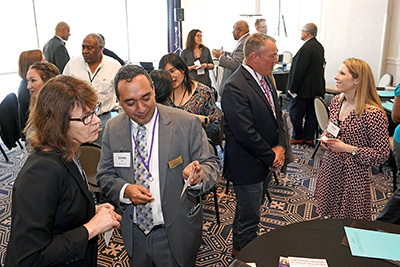Resources for Increasing Accessibility and Supporting Individuals with Disabilities

ERC-INCLUDES partners with AccessERC to maintain a searchable database of frequently asked questions, case studies, and promising practices related to how educators and employers can fully include students with disabilities. The Knowledge Base is an excellent resource for ideas that can be implemented in programs in order to better serve students with disabilities. In particular, the promising practices articles serve to spread the word about practices that show evidence of improving the participation of people with disabilities in postsecondary education.
Examples of Knowledge Base questions include the following:
- Are electronic whiteboards accessible to people with disabilities?
- Are peer review tools accessible?
- Are there computer keyboards designed to be used with only one hand?
- Are touch screens accessible?
- Do postsecondary institutions have to provide assistive technology (for example, screen enlargement or voice recognition software) to students with disabilities who enroll in distance learning courses?
- Does a postsecondary institution have to provide specific hardware or software (known as assistive technology) that an individual with a disability requests so that they can access information technology used on campus?
- Are funds available specifically for captioning?
- Are there any web-based tutorials on web accessibility?
Individuals and organizations are encouraged to propose questions and answers, case studies, and promising practices for the Knowledge Base. Contributions and suggestions can be sent to doit@uw.edu.
For more information on making your campus technology accessible and to learn more about accessible learning or universal design, review the following websites and brochures:
- The University of Washington’s hub for information on accessible technology, featuring how to create and develop accessible documents, videos, and websites, can be found here.
- Accessible University’s website featuring common web accessibility principles and solutions can be found here.
- A brochure on universally designing distance learning programs can be found on Equal Access: Universal Design of Distance Learning Programs.
- A brochure on what accessible distance learning is and how it helps students can be found on Accessible Distance Learning.
- A brochure on why accessible web design matters, and some resources to make your website accessible, can be found on Accessible Web Design.
More information on universal design in education can be found at the Center for Universal Design in Education.
More information and resources for engineering research center accessibility practices can be found at the AccessERC website. Furthermore, information and resources for engineering education can be found at the AccessEngineering website.